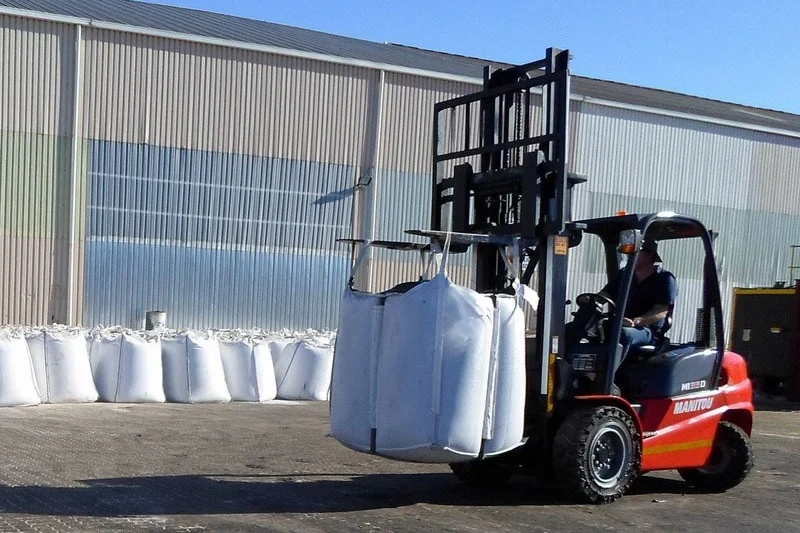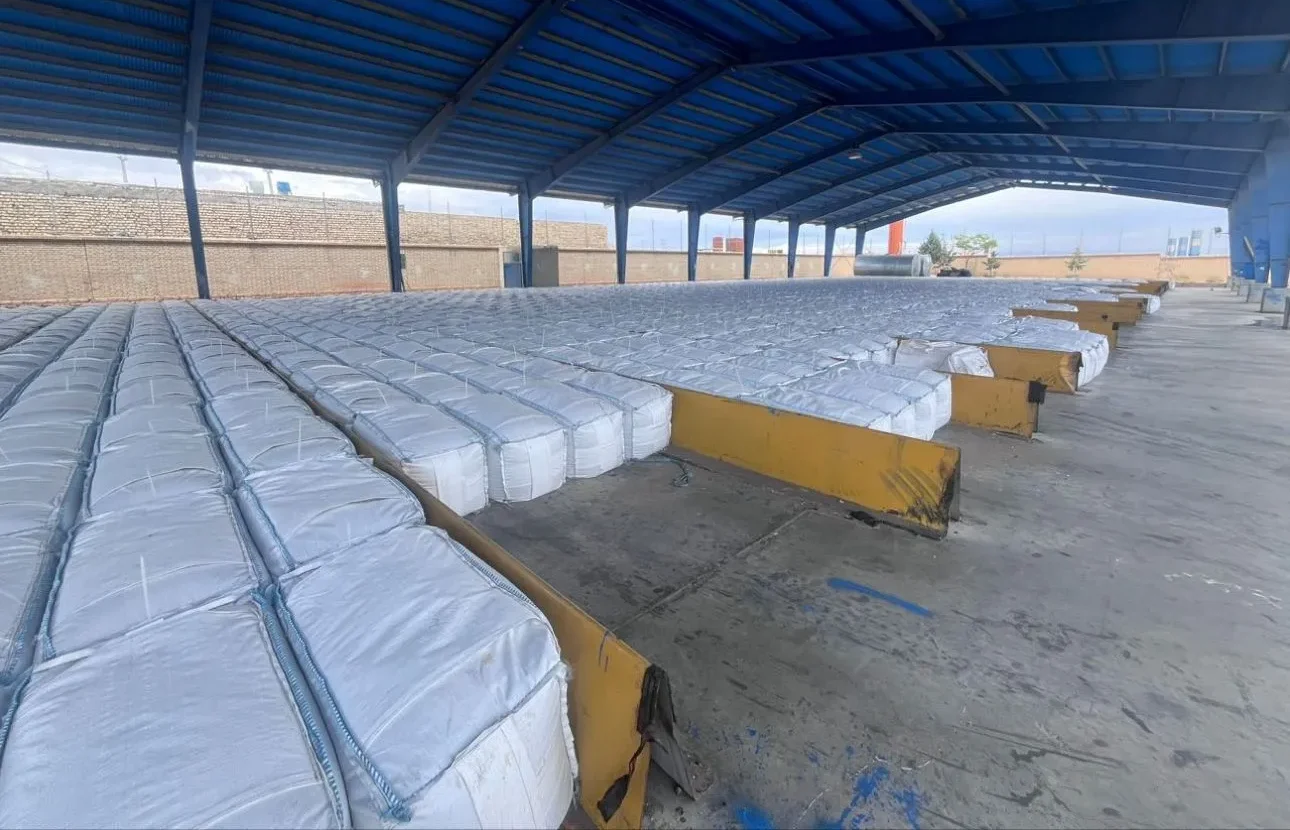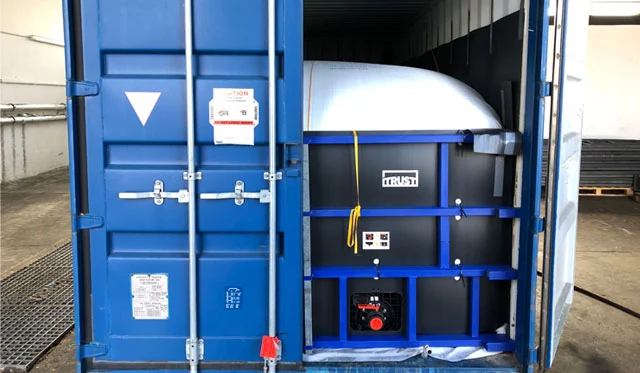 1 MT Jumbo Bags with Cage and Pallet
1 MT Jumbo Bags with Cage and Pallet
WHAT IS CHINESE STANDERD BITUMEN ?
Chinese grade bitumen refers to bitumen produced for China. China is a significant producer and consumer of bitumen, and its bitumen industry has its own grading system based on the properties and specifications of the bitumen. The grades may vary depending on factors such as viscosity, penetration, softening point, and application. Chinese grade bitumen is used in various construction projects, including road paving, waterproofing, and roofing. Chinese standards for bitumen, also known as asphalt, are set by various regulatory bodies and organizations in China to ensure quality, consistency, and safety in its production and use. These standards cover various aspects of bitumen including its properties, classification, testing methods, and application requirements.
SOME KEY FOR CHINESE STANDARS FOR BITUMEN INCLUDE:
- GB/T 11145: Bitumen for road construction – Specification: This standard specifies the requirements for various grades of bitumen used in road construction, including penetration grade bitumen, viscosity grade bitumen, and performance grade bitumen.
- GB/T 16826: Determination of Penetration of Bitumen: This standard specifies a method for determining the penetration value of bitumen using a penetrometer, which measures the depth to which a standard needle penetrates the bitumen sample under specified conditions.
- GB/T 4509: Determination of Softening Point of Bitumen: This standard specifies a method for determining the softening point of bitumen using a ring-and-ball apparatus, which measures the temperature at which the bitumen softens and the two surfaces of the bitumen sample meet under specified conditions.
- GB/T 5079: Determination of Flash Point and Fire Point of Bitumen: This standard specifies a method for determining the flash point and fire point of bitumen using a Pensky-Martens closed-cup apparatus, which measures the temperature at which bitumen gives off vapors that can be ignited under specified conditions.
- GB/T 8150: Determination of Ductility of Bitumen: This standard specifies a method for determining the ductility of bitumen using a ductility meter, which measures the distance to which a standard briquette of bitumen can be stretched before breaking under specified conditions.
These standards are regularly updated and revised by relevant authorities in China to reflect advancements in technology, industry best practices, and changing requirements. Compliance with these standards is essential for manufacturers, suppliers, and users of bitumen to ensure product quality and performance.
WHAT IS BITUMEN 70 CHINESE GRADE?
In China, “Bitumen 70” likely refers to a specific grade of bitumen based on its penetration value. Bitumen grades are often classified based on their penetration value, which indicates the depth in tenths of a millimeter to which a standard needle penetrates the bitumen sample under specified conditions.
Therefore, “Bitumen 70” could refer to a penetration grade bitumen with a penetration value falling within the range of 60 to 70 tenths of a millimeter. This classification is commonly denoted as “Penetration Grade 60/70” in international standards.
It’s essential to consult the relevant Chinese standards or specifications to confirm the exact properties and applications of Bitumen 70 within the Chinese market. Additionally, the specific requirements and grading systems may vary depending on the standard or specification used by different manufacturers or regulatory authorities in China.
WHAT IS BITUMEN 90 CHINESE GRADE?
In the context of Chinese bitumen standards, “Bitumen 90” likely refers to a specific grade of bitumen based on its penetration value. Bitumen grades in China are often classified according to their penetration values, which indicate the depth in tenths of a millimeter to which a standard needle penetrates the bitumen sample under specific conditions.
Therefore, “Bitumen 90” could denote a penetration grade bitumen with a penetration value falling within the range of 80 to 100 tenths of a millimeter. This classification is commonly denoted as “Penetration Grade 80/100” in international standards.
To accurately understand the properties and applications of Bitumen 90 within the Chinese market, it’s important to refer to the relevant Chinese standards or specifications. These standards will provide detailed information on the specific requirements and grading systems used for bitumen in China.
WHAT IS BITUMEN A70 CHINESE GRADE?
Bitumen A70, in the context of Chinese grades, refers to a specific type of bitumen with certain properties and characteristics. However, without detailed information about the specific standards and specifications set by Chinese authorities or organizations, it’s challenging to provide an exact definition or description of Bitumen A70.
In China, bitumen grades are often classified based on parameters such as penetration, softening point, and viscosity. The designation “A70” likely indicates a specific grade of bitumen with characteristics tailored for certain applications or performance requirements. It’s possible that “A70” corresponds to a penetration-graded bitumen with specific penetration and softening point values.
To accurately understand the properties and applications of Bitumen A70, it’s essential to refer to the relevant Chinese standards, specifications, or industry guidelines that define this grade of bitumen. These standards would provide detailed information about the physical properties, performance characteristics, and recommended uses of Bitumen A70 in various construction and paving applications.
WHAT IS BITUMEN AH70 CHINESE GRADE?
AH70 Bitumen is high quality asphalt, derived from crude petroleum refining. AH70 Bitumen is dark in color and possesses waterproofing and adhesive properties. It is substantially non-volatile and softens gradually when heated. In the context of Chinese bitumen standards, “Bitumen AH70” likely refers to a specific grade of bitumen. However, without detailed information about the specific Chinese standard or specification it corresponds to, it’s challenging to provide precise details.
In Chinese standards, bitumen grades are often classified based on various properties such as penetration, softening point, and viscosity. Therefore, “Bitumen AH70” could denote a specific grade of bitumen characterized by its penetration value, softening point, or other properties.
To accurately understand the properties and applications of Bitumen AH70 within the Chinese market, it’s essential to refer to the relevant Chinese standards or specifications governing bitumen quality and classification. These standards will provide detailed information on the specific requirements and grading systems used for bitumen in China.
USES OF BITUMEN AH70 CHINESE GRADE
AH70 Bitumen grade is used as binders of mineral aggregates in asphalt concrete and hot laid plant mix for highways, airports, parking areas, driveways, and curbs. Bitumen AH70, as per Chinese standards, is likely used for various applications in construction and infrastructure projects.
SOME POTENTIAL USES OF BITUMEN AH70 CHINESE GRADE MAY INCLUDE:
- Road Construction: Bitumen AH70 is commonly used as a binder in asphalt mixtures for road construction and pavement surfaces. It helps provide durability, flexibility, and resistance to weathering and traffic loads.
- Asphalt Pavements: Bitumen AH70 is suitable for producing asphalt concrete mixtures used in the construction of highways, expressways, airport runways, and other transportation infrastructure.
- Waterproofing: Bitumen AH70 can be utilized in waterproofing applications for roofs, bridges, tunnels, and other structures. It forms a durable and impermeable layer that protects against moisture infiltration.
- Asphalt Emulsions: Bitumen AH70 may also be used in the production of asphalt emulsions, which are used for surface treatments, tack coats, and pavement preservation techniques.
- Industrial Applications: Bitumen AH70 might find applications in industrial processes such as manufacturing of roofing materials, adhesives, sealants, and coatings.
- Aggregate Bonding: Bitumen AH70 can be used as an adhesive to bond aggregates together in the production of asphalt mixtures, enhancing the strength and cohesion of the pavement layers.
- Pavement Maintenance: Bitumen AH70 may be used for pavement maintenance activities such as crack sealing, pothole repair, and surface rejuvenation to extend the service life of existing asphalt pavements.
These are just a few examples of the potential uses of Bitumen AH70 Chinese grade. The specific application will depend on factors such as project requirements, climate conditions, and engineering specifications. It’s important to consult relevant standards and guidelines to ensure proper selection and usage of bitumen for specific applications.
IS BITUMEN A70 AND BITUMEN AH70 IS THE SAME GRADE ?
Without specific information about the grading systems used in different regions or countries, it’s difficult to definitively determine whether Bitumen A70 and Bitumen AH70 refer to the same grade. Grading systems for bitumen can vary between countries, regions, and industry standards organizations, and different naming conventions may be used to classify bitumen grades.
In some cases, variations in naming conventions or grading systems may exist even within the same country or region, depending on factors such as industry practices, supplier preferences, or specific project requirements.
To accurately determine whether Bitumen A70 and Bitumen AH70 are the same grade, it’s essential to refer to the relevant standards, specifications, or documentation provided by the suppliers or regulatory authorities in the respective regions where these grades are used. These sources would provide detailed information about the properties, characteristics, and applications of each bitumen grade, allowing for a comparison to determine any similarities or differences.
SAFE HANDLING AND STORAGE
- Use Personal Protective Equipment (PPE’s) when handling AH70 Bitumen (i.e. gloves, eye protectors, etc.)
- Maintain safe heating temperatures when using AH70 Bitumen.
- Avoid contact with skin, eyes, and clothing
- Avoid breathing vapor, spray, or mists when applying.
- Keep AH70 Bitumen drums in a cool, well-ventilated place.
PACKAGING OF BITUMEN 70, BITUMEN 90 AH70 BITUMEN
The packaging of bitumen, including AH70, Bitumen 70, and Bitumen 90, typically depends on the supplier, transportation requirements, and the preferences of the end users. Common packaging options for bitumen include: AH70 Bitumen available in 0.6 mm thickness, 180 kg net weight drums, 95 cm height and 45 cm diameter (+/- 3 kg operational tolerance).
- Drums: Bitumen is often packaged in steel drums, typically ranging in size from 150 kg to 200 kg.
- Bulk Tankers: For larger quantities, bitumen can be transported in bulk tankers or ISO containers, which can hold several tons of bitumen.
- Flexitanks: Flexitanks are large, flexible containers that can be used for transporting liquid products, including bitumen. They are often preferred for shipping bitumen in bulk quantities.
- Jumbo Bags (FIBC): Bitumen can also be packed in jumbo bags, also known as flexible intermediate bulk containers (FIBC), for easier handling and transportation of smaller quantities.
- Tank Trucks: Bitumen can be delivered directly to the customer’s site using tank trucks equipped with heating systems to maintain the temperature of the bitumen during transportation.
The specific packaging method chosen may depend on factors such as the volume of bitumen required, the distance of transportation, storage facilities at the destination, and logistical considerations. It’s essential for suppliers and customers to discuss packaging requirements to ensure the safe and efficient delivery of bitumen products.
BITUMEN 60/70 IN 1 MT JUMBO BAG WITH A STEEL CAGE AND PALLET:
 Loading 20MT in 20 ft Container
Loading 20MT in 20 ft ContainerBITUMEN 60/70 IN 1 MT JUMBO BAG WITHOUT CAGE AND PALLET:
 Loading 20 MT in 40 ft Container
Loading 20 MT in 40 ft Container
BITUMEN 60/70 IN 1300 KG JUMBO BAG:

BITUMEN 60/70 IN 300 KG BITUBAG:
 Loading 24 MT in 20 ft Container
Loading 24 MT in 20 ft Container
BITUMEN 60/70 BULK IN FLEXI BAG:
 Loading 20 MT in Bitumen Flexi Bag
Loading 20 MT in Bitumen Flexi Bag
BITUMEN 60/70 BULK IN VESSEL:
 Loading 2000 to 20,000 MT in Bitumen Carrier
Loading 2000 to 20,000 MT in Bitumen Carrier
WHAT ARE THE DIFFERENCES OF ASTM AND CHINESE GRADE
The American Society for Testing and Materials (ASTM) and Chinese standards often have differences in their specifications and testing methods for bitumen.
SOME KEY DIFFERENCES BETWEEN ASTM STANDARDS AND CHINESE STANDARDS FOR BITUMEN MAY INCLUDE:
- Composition and Performance Requirements: ASTM standards typically outline specific requirements for the physical properties, chemical composition, and performance characteristics of bitumen. Chinese standards may have similar requirements but may also incorporate additional specifications tailored to local climate conditions and construction practices.
- Testing Methods: ASTM standards provide detailed procedures for testing various properties of bitumen, such as viscosity, penetration, softening point, and ductility. These testing methods are designed to ensure consistency and reliability in assessing bitumen quality. Chinese standards may utilize similar testing methods but may have variations or modifications to suit local testing facilities and equipment.
- Grading Systems: ASTM uses a grading system to classify bitumen based on penetration or viscosity ranges, such as ASTM D946 for penetration-graded bitumen and ASTM D3381 for viscosity-graded bitumen. Chinese standards may have their own grading systems based on different criteria, which may include penetration, softening point, or other parameters.
- Specifications for Asphalt Mixtures: ASTM standards provide guidelines for the use of bitumen in asphalt mixtures, including specifications for asphalt binder content, aggregate gradation, and performance grading. Chinese standards may have similar requirements but may also include additional specifications or performance tests tailored to local pavement design and construction practices.
- Regulatory Compliance: In some cases, bitumen products intended for use in specific countries or regions may need to comply with local regulatory requirements and standards, which may include ASTM standards, Chinese standards, or other international standards recognized by local authorities.
Overall, while ASTM and Chinese standards may share similarities in their approach to specifying bitumen properties and performance, differences in testing methods, grading systems, and regional considerations may exist. It’s essential for stakeholders in the bitumen industry to be aware of these differences and ensure compliance with relevant standards and specifications for specific projects or applications.
TECHNICAL DATA SHEET OF BITUMEN 70, BITUMEN 90 AND BITUMEN 110
Test Data Unit Quality Indicators Measured Results Test Mehods
Needle penetration 1/10 mm 60-80 73 T 0604-2011
Penetration Index / -1.5-1.0 -1.2 T 0604-2011
Softening Point ℃ ≥ 46 47.5 T 0606-2011
Dynamic viscosity at 60 ℃ Pa.S ≥180 225 T 0620-2000
Ductility (10 ℃) Cm ≤ 20 73 T 0605-2011
Ductility (15 ℃) Cm ≥100 >150 T 0605-2011
Wax Content %(mass fraction) ≤ 2.2 1.8 T 0615-2011
Open flash point ℃ ≥ 260 >300 T 0611-2011
Solubility %(mass fraction) ≥ 99.5 99.96 T 0607-2011
Density (15 ℃) g/cm3 Presentat 1.038 T 0603-2011
Density (25 ℃) g/cm3 Presentat 1.031 T 0603-2011
Quality Change %(mass fraction) -0.8 - 0.8 -0.166 T 0609-2011
T 0610-2011
Residual Penetration Ratio (25 ℃) ≥ 61 63.1 T 0604-2011
Residual elongation (10 ℃) ≥ 6 7 T 0605-2011
TECHNICAL DATA SHEET OF AH70 BITUMEN
For more information, please Contact our Sales Team.
SPECIFICATION RESULT MIN MAX TESTS METHOD
Penetration,0.1mm, @25 °C 65 60 80 ASTM D5/T0620
PI (Penetration Index) -0.99 -1.5 1 ASTM D5/T0620
Dynamic Viscosity @ 60°C, (Pa.s) 185 180 - ASTM D2171/T0620
Softening Point, C, Dist Water 48.4 46 - ASTM D36/10606
Density @ 15 °C, g/cm3 1.0398 - - ASTM D3289/10603
Flash Point Temperature, °C 346 260 - ASTM D92/T0611
Solubility in TCE wt% 99.94 99.5 - ASTM D2042/T0607
Ductility @15 °C,5 cm/min >100 100 - ASTM D113/10605
Ductility@10°C,5 cm/min 81 25 - ASTM D113/10605
Wax Content, % 1.76 - 2 EN 12606/TOF15
Test on residue after TFOT
Loss On Heating, Mass % 0.049 -0.8 0.8 ASTM D6/T0609-10610
Ductility @15°C,5 cm/min 83 15 - ASTM D113/10605
Ductility@10°C,5 cm/min 8 6 - ASTM D113/T0605
Retained Penetration as % of Org 74 61 - ASTM D5/10620

